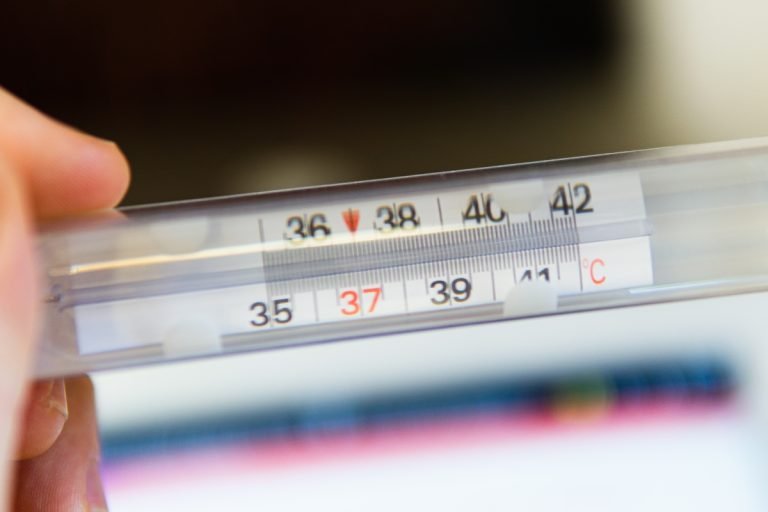Table of Contents
What is a temperature sensor, and how does a temperature sensor work?
A temperature sensor works by detecting the temperature of its surroundings and converting this temperature into an electrical signal. There are many different types of temperature sensors, but most of them operate on the principle of temperature-dependent resistance. You must have heard of ambient air. An ambient air temperature sensor is a type of temp sensor that is designed to measure the temperature of the air in its surrounding environment.
Types of temperature sensor
- For example, a thermistor is a type of temperature sensor that has a resistance that changes with temperature. When the temperature of the thermistor increases, its resistance decreases, and vice-versa. By measuring the resistance of the thermistor, it is possible to determine the temperature of the surrounding environment. This is the most basic principle behind the temperature sensing devices.
- Other types of temp sensors, such as thermocouples and resistance temperature detectors (RTDs), work on similar principles. They use the temperature-dependent properties of certain materials to convert temperature into an electrical signal that can be measured and interpreted by electronic devices.
Regardless of the type of temperature detector, the electrical signal generated by the sensor is converted into a digital output, such as a voltage/current, which can be easily read by meters and electronic devices. This allows the temperature to be measured and monitored accurately.
Application of temperature sensor
You just cannot imagine how important is this temperature detector in the life of human beings. You just can’t imagine life without this.
- HVAC (heating, ventilation, and air conditioning) systems: Temp sensors are used to control the temperature in buildings, offices, homes, hospitals, malls and almost everywhere by regulating the flow of heated or cooled air. They generally use a probe to sense the temperature of the device.
- Automobiles: Temp sensors are used to monitor the temperature of the engine, transmission, engine coolant temperature sensor, and other components in order to prevent overheating and ensure optimal performance. In special automobiles we sometimes also need intake air temperature sensor, engine temperature sensor, cylinder head temperature sensor, oil temperature sensor etc.
- Industrial processes: Temp sensors are used to monitor and control the temperature of industrial processes, such as the manufacture of chemicals, plastics, and pharmaceuticals etc.
- Medical equipment: Temp sensors are used in medical equipment, such as incubators and infant warmers, to maintain a consistent and safe temperature for patients.
- Home Appliances: Temp sensors are used in appliances, such as refrigerators and ovens, to regulate the temperature and ensure proper functioning.
- Environmental monitoring: Temp sensors are used to monitor and record temperature data in a variety of environments, including weather stations, agricultural fields, and marine environments.
- Food safety: Temp sensors are used in food storage and handling to ensure that food is kept at safe temperatures to prevent the growth of bacteria and other harmful microorganisms.
- Aerospace: Temp sensors are used in aerospace applications, such as aircraft and rockets, to monitor and control the temperature of various components.
It is really difficult to mention all the applications in this small article.
What is a nest temperature sensor?
The Nest Temperature Sensor is a device that is used to measure the temperature of a specific room or location in a home. It is used in conjunction with the Nest Learning Thermostat or the Nest Thermostat E to provide more precise temperature control.
It uses a temp sensor to measure the temperature of the room and sends this information wirelessly to the Nest thermostat. The thermostat can then use this information to adjust the heating or cooling of the home to maintain a consistent temperature throughout the house according to the user choice or in auto mode.
In addition to measuring the temperature, the Nest Temperature detector also has a motion detector that can detect when a room is occupied and adjust the temperature accordingly. This helps to conserve energy and save money on energy bills.
WiFi temperature sensor
Most WiFi temperature sensors use a thermistor or thermocouple, to measure the temperature of the surrounding environment. The sensor converts the temperature into an electrical signal, which is then transmitted wirelessly over the Wi-Fi network to a receiver or computer.
Some WiFi temp sensors (wireless temperature sensor) also have additional features, such as alarms or alerts that can be triggered when the temperature exceeds certain thresholds, or the ability to control and regulate the temperature using a connected device, such as a thermostat or heater.
Wi-Fi temp sensors are smart temperature sensor which are useful for remotely monitoring and controlling the temperature in a variety of applications, and they can help to improve energy efficiency and reduce energy costs.

